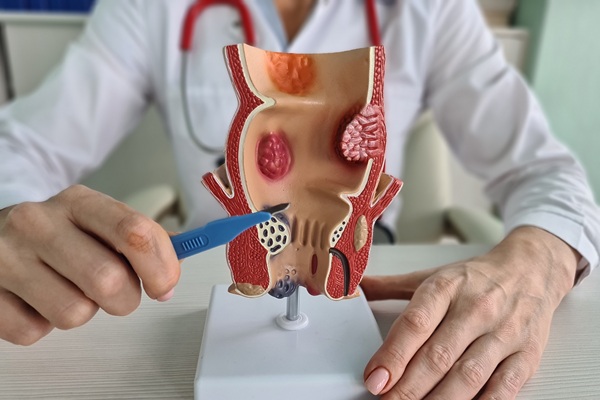Deep Vein Thrombosis TreatmentOrange, CA
Deep vein thrombosis (DVT) is a serious and complex condition that requires immediate treatment. This condition is something that patients should not try to tackle on their own. Our team of specialists can help provide the necessary treatment to address this condition and its symptoms with our professional care.
Vascular and Interventional Specialists of Orange County is an internationally renowned medical center with advanced treatment options for DVT and pulmonary embolization. To learn more about our treatment process or schedule an appointment, call us today at 714-598-1194.
Understanding Deep Vein Thrombosis and Pulmonary Embolism
DVT occurs when a blood clot or thrombosis forms inside the deep veins, usually in the calf of the leg and thigh. This can happen independently or with other serious conditions, including heart disease, cancer, or pregnancy. Unfortunately, it is a common type of blood clot, affecting around 900,000 people annually. If left untreated, DVT can lead to a condition called pulmonary embolism.
Pulmonary embolism occurs during a DVT case when a blood clot breaks off and travels up to the pulmonary arteries in the lungs, creating a blockage and stopping blood flow. The results can be fatal. Those experiencing the following should seek emergency care, shortness of breath, chest pain, or a cough that produces blood.
Check out what others are saying about our Deep Vein Thrombosis Treatment services on Yelp: Deep Vein Thrombosis Treatment Orange
Signs and Symptoms
All patients are different, and DVT symptoms may vary. However, primary symptoms include:
- Leg pain or swelling
- Redness in the leg
- Feelings of heaviness or fullness in the leg
- Painless ulcers on the leg
- Feeling heat or warmth in the legs
If a patient experiences any of the above symptoms, they should schedule an appointment with us as soon as possible. For this condition, the earlier the detection, the better off the patient will be. Earlier detection lowers the risk of heart attacks, strokes, PE, and fatality.
Testing and Diagnosis
During a patient’s first appointment, one of our vascular doctors will examine the patient. The doctor will diagnose or rule out DVT or PE by performing a physical examination and reviewing the patient’s medical history. In addition, the doctor may order blood tests to confirm the presence of blood clots in the veins. These tests include:
- Complete blood count (CBC). Measures hemoglobin, red and white blood cell levels, and checks for signs of infection.
- Prothrombin time (PT). Measures how long the body takes to clot after receiving an injection of vitamin K- dependent clotting factors and calcium.
- Partial Thromboplastin Time (PTT). Measures how long it takes the body to form fibrin strands when exposed to thromboplastin.
- Enzyme Immunoassay. Detects the protein d-dimer that is found in clots.
After tests are run and it is determined that DVT or PE is present, we will build a treatment plan for the patient.
Treatment Options
The good news is that we can implement a treatment plan after our vascular doctors receive the patient’s test results. DVT and PE treatment will include minimally-invasive procedures, medications, and lifestyle changes. Three goals in the treatment process fall under the umbrella of prevention and reduction. The goals are to prevent blood clot growth, prevent the risk of PE, and reduce the chances of another DVT episode.
Medications
We may prescribe blood thinners known as anticoagulants, heparin, and enoxaparin. These three medications will block the activity of a certain enzyme that prevents blood from clotting. As a result, they can help dissolve clots and prevent more from forming in the body.
Heparin can usually be given through an intravenous (IV) line into the arm or neck vein, while enoxaparin is through injection under the skin (subcutaneously). If the patient receives heparin or enoxaparin orally, they may be prescribed another drug called warfarin since these medications do not work alone at preventing blood clots from forming again.
Patients receiving either an IV or injection, usually for a few weeks, will then be prescribed warfarin, taken orally, to provide long-term protection against future occurrences of DVTs.
Minimally-Invasive Options
Some patients may not be ideal candidates for oral medications. If this is the case, our specialist may recommend thrombolysis, filters, or support stockings (compressions).
Thrombolysis is a minimally-invasive procedure usually reserved for patients with advanced DVT and PE stages. It can also help patients who do not respond to blood thinners. Clot busters or thrombolytics are given through a catheter or IV and connected directly to the blood clot. It is important for patients not to perform any strenuous activity up to 24 hours after this procedure.
Inferior vena cava (IVC) filters are inserted into the patient’s vein and are used to prevent PE. According to the FDA, they are meant to be used as a temporary solution and should be removed as soon as blood clots are no longer a risk. Additionally, IVC filters may be used simultaneously for patients with stents in place.
Lifestyle Changes
Support stockings, on the other hand, are stockings that pull up to the knee and help prevent pooling in the patient’s legs and reduce swelling. Our doctor may suggest that the patient wear the stockings during the day (or when most active) for an unspecified amount of time. The timeframe depends on the severity of the patient’s case; for some, they may need to wear the stockings for months to years.
Aftercare
Once patients begin their treatment plan, they must follow the doctor’s recommendations, whether for the medication usage or the minimally or non-invasive treatment options. After a patient has experienced DVT or PE, it is vital that they get plenty of rest and avoid strenuous activities that may cause clotting in other parts of the body, such as the legs and arms.
Avoiding smoking is a good practice because it increases the risk of blood clots forming in the veins. Also, do not drink alcohol when taking anticoagulant medications, as it will increase the risk of bleeding after receiving an injection or surgery.
We will schedule follow-up appointments to track the patient’s progress. We can make changes to the treatment plan as necessary.
Frequently Asked Questions
What causes DVT?
DVT is a serious condition caused by blood clots forming deep inside the veins, usually in the lower extremities. This can be the result of a random stand-alone case or can be caused by other medical conditions that affect the vascular system. It requires immediate medical attention, so it does not progress into PE.
How do I know if I have DVT?
While there are symptoms of DVT such as leg pain or swelling, redness in the leg, feelings of heaviness or fullness in the leg, painless ulcers on the leg, and feeling heat or warmth in the legs, you will still need to be diagnosed by one of our doctors. Since multiple medical disorders may cause similar symptoms, the doctor will perform certain tests to confirm the diagnosis.
Will medications cure DVT?
Blood thinners may be prescribed to dissolve blood clots and prevent more from forming. Common prescriptions include anticoagulants, heparin, and enoxaparin. Our vascular specialist will advise on an effective treatment plan after reviewing your specific case.
How do I know if my DVT progressed to PE?
We run several tests to see the exact stage of your condition. The doctor may order a Complete Blood Count (CBC), Prothrombin time (PT), Partial Thromboplastin Time (PTT), or Enzyme Immunoassay. If PE is evident, we will advise on an effective treatment plan that may involve a procedure.
Call Us Today
Knowing the signs and symptoms of deep vein thrombosis is important so you can seek medical treatment as soon as possible. No matter the cause, we are dedicated to finding patients an effective treatment plan for both conditions. If you are experiencing any of these symptoms, schedule an appointment with our passionate team of Vascular and Interventional Specialists in Orange County by calling 714-598-1194.
Vascular & Interventional Specialists of Orange County is located at 1010 W La Veta Ave Suite 320 Orange, CA 92868.





